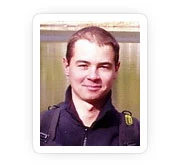Yoga Anatomy: A Cool Tip for Deeper Breathing

Pranayama is one of the core practices in the Eight Limbs of Yoga. While asana (postures) are much more commonly practiced in the West, pranayama is a powerful tool for regulating physiological functions, especially blood pressure.
I searched Pubmed and found some scientific articles that support the safety and efficacy of deep breathing techniques, especially for the management of hypertension (high blood pressure). I share them with you here.
- The first discusses the beneficial effects of exercise and respiratory training for patients with severe pulmonary hypertension. The authors conclude, “This study indicates that exercise and respiratory training as an add-on to medical treatment may improve exercise capacity and QoL (quality of life), and that they have a good long-term safety…” (1)
- The next concludes that “Respiratory retraining using the slow breathing technique appears to be a useful adjunctive for cardiorespiratory control in hypertensive patients.” (2)
- The third is entitled “Breathing Control Lowers Blood Pressure” (‘nuff said). (3)
You can check out the links below to read the full articles. So, we’re beginning to see confirmation of practices the yogis have been doing for some time now—exciting stuff!
Bear in mind that anything as powerful as pranayama can also have adverse effects if practiced recklessly. You can find details of these effects and how to avoid them in B.K.S. Iyengar’s “Light on Pranayama” (the bible for pranayama). I also had the privilege to discuss my personal experience of some of these effects with Yogacharya Iyengar himself (trembling, salivation, headache). He gave me this pearl: “If you feel these effects, stop for the day. If you don’t feel them, continue on with your practice.”
A Cool Tip for Deeper Breathing
A concept known as “portability” can also support a theory such as the efficacy of deep breathing in regulating blood pressure. In general, something that works in one lab should work in another (or it is suspect). What does this have to do with yoga? Sound biomechanical theories, such as Proprioceptive Neuromuscular Facilitation and reciprocal inhibition, can be incorporated into whatever style of yoga you practice and transported across muscle groups as well. On a smaller scale, something that expands the chest in one pose should work to enable a deeper breath in another pose.

Using the accessory muscles of breathing
to expand the chest in Dandasana.
Let’s apply the concept of portability to our practice. Try the cue for activating the accessory muscles of breathing that we illustrated in Tadasana (Mountain Pose) and apply it in Dandasana (Staff Pose). Here are the cues from the above-referenced article:
- Sitting in Dandasana, rest your hands on your thighs.
- Now, exhale naturally and then gently draw the shoulders back to bring the scapulae (shoulder blades) toward the spine.
- As you inhale, imagine pressing the sides of your shoulders and upper arms against an imaginary wall, like a door frame. Feel how this expands your chest.
- Repeat this cue two more times.
- Now take a rest for a minute or two.
- Now repeat the above steps one more time.
Now try another technique in Dandasana:
- As you inhale, engage the triceps to extend the elbows and press your hands into the mat.
- Draw the shoulder blades toward the midline with the rhomboids and middle trapezius and then attempt to drag the hands apart to activate the serratus anterior.
- Feel how this expands your chest.
- Release during your exhalation.
Reprinted with permission from Daily Bandha
Illustrations by the Daily Bandha.
 Author Ray Long MD, FRCSC is a board-certified orthopedic surgeon and the founder of Bandha Yoga. Ray graduated from The University of Michigan Medical School with post-graduate training at Cornell University, McGill University, The University of Montreal and Florida Orthopedic Institute. He has studied hatha yoga for over twenty years, training extensively with B.K.S. Iyengar and other leading yoga masters.
Author Ray Long MD, FRCSC is a board-certified orthopedic surgeon and the founder of Bandha Yoga. Ray graduated from The University of Michigan Medical School with post-graduate training at Cornell University, McGill University, The University of Montreal and Florida Orthopedic Institute. He has studied hatha yoga for over twenty years, training extensively with B.K.S. Iyengar and other leading yoga masters.
 3d Graphic Designer / Illustrator Chris Macivor has been involved in the field of digital content creation for well over ten years. He is a graduate of Etobicoke School of the Arts, Sheridan College and Seneca College. Chris considers himself to be equally artistic and technical in nature. As such, his work has spanned many genres from film and television to video games and underwater imagery.
3d Graphic Designer / Illustrator Chris Macivor has been involved in the field of digital content creation for well over ten years. He is a graduate of Etobicoke School of the Arts, Sheridan College and Seneca College. Chris considers himself to be equally artistic and technical in nature. As such, his work has spanned many genres from film and television to video games and underwater imagery.
Resources
1. https://www.ncbi.nlm.nih.gov/pubmed/21311162
2. http://www.scielo.br/scielo.php?pid=S0066-782X2007000600005&script=sci_arttext&tlng=en
3. https://www.ncbi.nlm.nih.gov/pubmed/11319675



